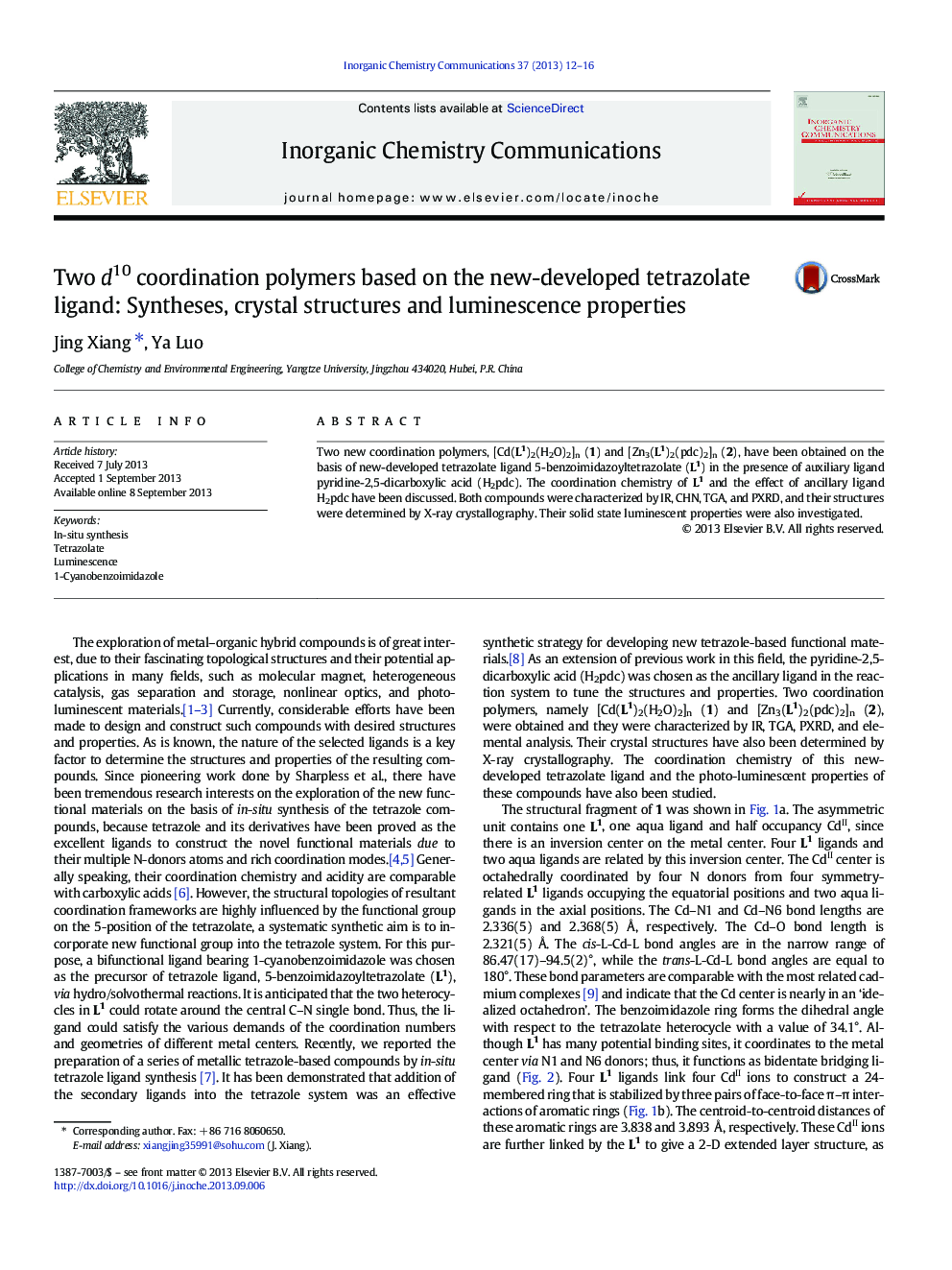| Article ID | Journal | Published Year | Pages | File Type |
|---|---|---|---|---|
| 1301840 | Inorganic Chemistry Communications | 2013 | 5 Pages |
•The coordination chemistry of new-developed tetrazolate ligand was investigated.•Ancillary ligand plays the important roles in the formations of two compounds•1 is a 44 grid topological architecture and 2 is a 3-D tetra-nodal topological net•The luminescence properties of 1 and 2 have been measured
Two new coordination polymers, [Cd(L1)2(H2O)2]n (1) and [Zn3(L1)2(pdc)2]n (2), have been obtained on the basis of new-developed tetrazolate ligand 5-benzoimidazoyltetrazolate (L1) in the presence of auxiliary ligand pyridine-2,5-dicarboxylic acid (H2pdc). The coordination chemistry of L1 and the effect of ancillary ligand H2pdc have been discussed. Both compounds were characterized by IR, CHN, TGA, and PXRD, and their structures were determined by X-ray crystallography. Their solid state luminescent properties were also investigated.
Graphical abstractTwo new coordination polymers, [Cd(L1)2(H2O)2]n (1) and [Zn3(L1)2(pdc)2]n (2), have been obtained on the basis of new-developed tetrazolate ligand 5-benzoimidazoyltetrazolate (L1) in the presence of auxiliary ligand pyridine-2,5-dicarboxylic acid (H2pdc). The coordination chemistry of L1 and the effect of H2pdc have been investigated. Both compounds were characterized by IR, CHN, TGA, and PXRD, and their structures were determined by X-ray crystallography. The solid state luminescent properties were also investigated.Figure optionsDownload full-size imageDownload as PowerPoint slide
